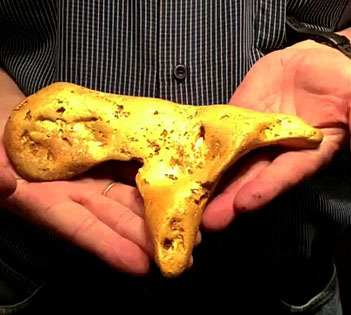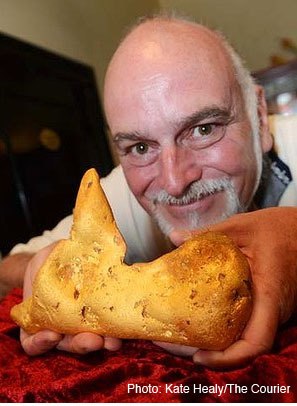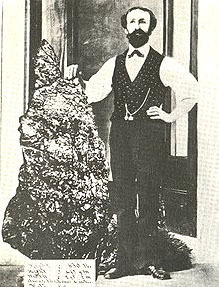Armed with a $6,000 metal detector, a self-employed Aussie man hit the jackpot last Wednesday when he unearthed a 12-pound gold nugget worth close to a half-million dollars near the historic gold rush city of Ballarat in Southeast Australia.

Responding to a faint beep from his detector, the treasure hunter's initial hunch was that the glistening metal resting barely two feet below the surface was a gold-colored car part. What emerged, however, was a life-changing, T-shaped nugget of pure gold.
The prospector, who wishes to remain anonymous, delivered his find to the Ballarat Mining Exchange Gold Shop, where owner Cordell Kent confirmed the good news. "It’s extremely significant as a mineral specimen," Kent told Adelaide Now. During his 20 years in business, Kent had never certified a nugget this large.

''We have 800 prospectors on our books and only a couple of those have ever found a nugget over 100 ounces,'' he said.
Gold was first discovered in Ballarat in 1851, and a subsequent gold rush attracted 20,000 miners to the city by 1853. "We are 162 years into a gold rush and Ballarat is still producing nuggets — it’s unheard of," said Kent.
The impressive size of the nugget had newscasters wondering if this chunk of gold rivaled the largest ones ever found. The answer is "not even close." Last week's Ballarat find is tiny compared to the Holtermann Nugget, which was discovered in 1872 about 260 miles to the northeast in New South Wales.

That nugget weighed in at 639 pounds, was 59 inches tall and contained 5,000 ounces of pure gold. Considered the largest single mass of gold ever found, the Holtermann Nugget is named for Bernhardt Otto Holtermann, a German-born gold miner and businessman who is credited with making the extraordinary discovery.
There is speculation that the rare 12-pound Ballarat nugget will be sold to a private collector or a museum rather than be melted down.
No comments:
Post a Comment